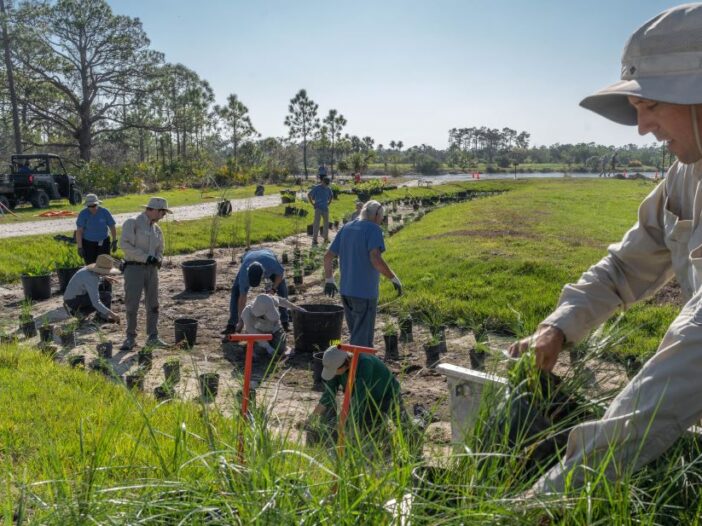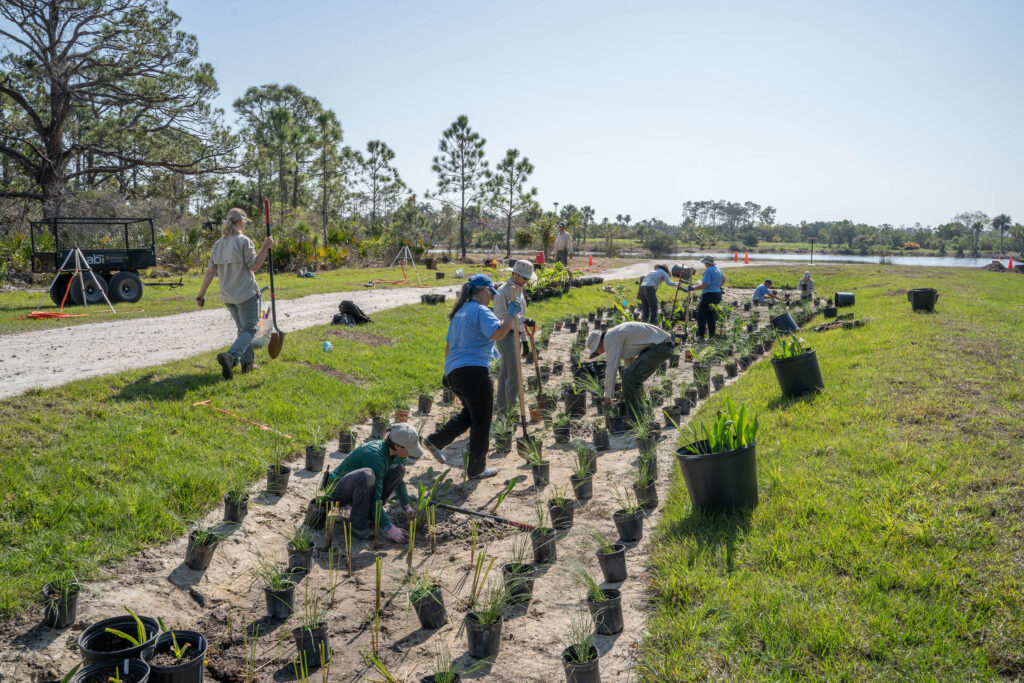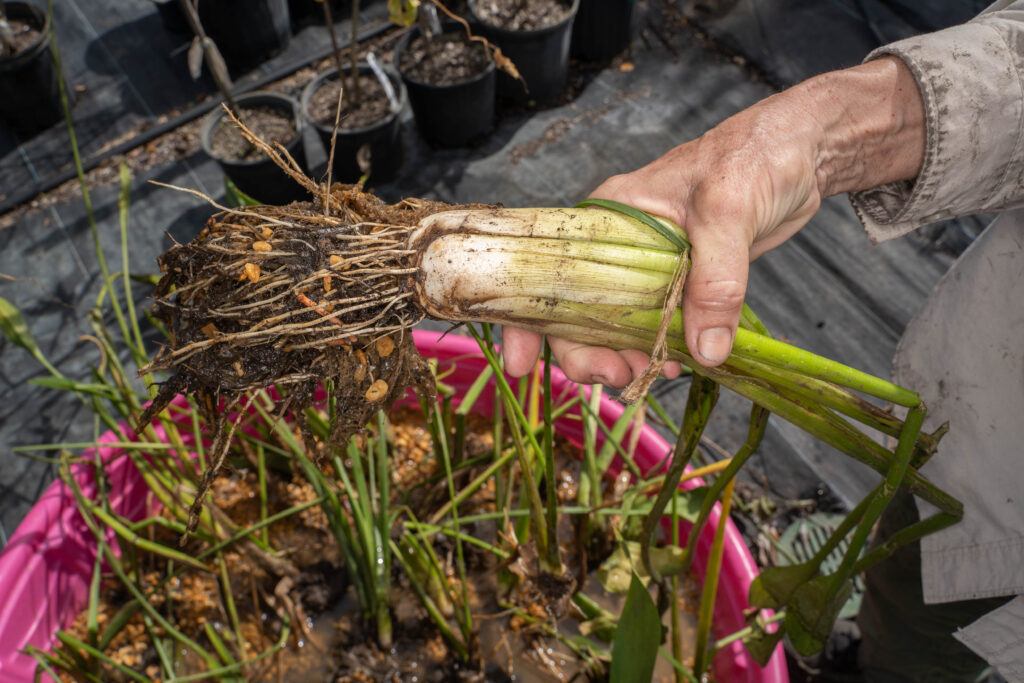
Recent rains hint at the wet season to come — and with it our chance to see our exciting new environmental feature in action.
A few weeks ago, Garden conservation and horticulture specialists planted a bioswale on our property’s western border. The project is a partnership with Collier County. The county expanded boat trailer parking for Bayview Park; the Garden agreed to take on the additional stormwater runoff that would result from the increased pavement.
Excess rainwater will flow through the new 300-foot-by-20-foot swale, where 2,500 native plants (another 1,000 will be planted soon) will filter it before it trickles into our lakes. Bioswales are a simple and natural approach to a problem that vexes Southwest Florida: dirty stormwater. This runoff — combined with the stuff that is flushed down the Caloosahatchee River from Lake Okeechobee — can contribute to harmful algal blooms and other water-quality issues.

Here’s the basic science:
- When rain hits streets and developed areas like neighborhoods and commercial complexes, it picks up grit from car exhaust, nutrients* from fertilizers, and other water-spoiling substances.
- Ideally, wetlands and undeveloped areas would collect the water, plants would filter it, and then it would percolate into the ground or trickle to the nearest waterbody.
- But roads and development block this natural process. Most of our runoff gushes into storm drains, unfiltered, and then is carried to the nearest body of water.
- Enter bioswales. These long trenches, when planted with native species, manage stormwater in the same way nature does. That’s why you see swales in our parking lots. They catch, hold, and filter rainwater before slowly releasing it into our nature-based stormwater management system.
(*In small quantities, nutrients such as nitrogen and phosphorus can aid the growth of plants, particularly crops. In heavy doses, though, the substances prompt the growth of algae, feeding toxic red tide blooms and cyanobacteria outbreaks.)
This new bioswale is a long time in the making. The project started with Garden conservationists collecting seeds and cuttings from native plants on our property and reproducing them by the hundreds for use in the swale. Because the swale abuts our Preserve, we want to maintain genetic integrity and stay in sync with bloom times, pollination, and other natural processes.

“It took us about a full year, between planning, collecting, and then propagating,” says Conservation Horticulture Manager Jessica DeYoung. “We had a wonderful team of volunteers who made it happen.”
There are 11 different species represented in the swale. The biodiversity helps replicate naturally occurring ecosystems.
“It can really be used as a habitat, not just an area humans carved out for our usage,” DeYoung says.
The swale plants include:
- Water hyssop (Bacopa monnieri): This ground cover will spread through the swale and inhibit the growth of weeds. (Side note: It is also considered an herb commonly used in Ayurvedic medicine.)
- Sand cordgrass (Spartina bakeri): This tall, finely textured grass grows in fountain-like clumps and is useful both as an ornamental plant and a hard-working water filter. The grass used here was “rescued” from Picayune Strand State Forest after land managers realized it was in the way of a project that restores the historic flow of water over the 74,000-acre forest. Picayune had been drained and carved into plats in the 1960s for a housing project that never materialized.
- Leather fern (Rumohra adiantiformis): This delicate fern is not often used in swale plantings, but it tolerates fresh and mildly saline water. Our team included it to add biodiversity and create an aesthetically pleasing palette — as well as to test the fern’s suitability in swale and shoreline environments.
- Duck potato (Sagittaria lancifolia): The “potato” in duck potato refers to its tuberous roots. This common wetland plant nourishes wildlife with its seeds and tubers (which, incidentally, are edible to humans, too). It’s also visually appealing with arrow-shaped leaves and flower stalks with delicate white blooms.
“’Green infrastructure,’ or using natural elements to solve ecosystem-related issues, is a concept that is really on the rise,” DeYoung says. “We’re excited to share natural and long-lasting solutions such as this swale with our community.”
Want to learn more about stormwater? Take our self-guided audio tour, Journey of a Raindrop, on-site or at home.

About the Author
Jennifer Reed is the Garden’s Editorial Director and a longtime Southwest Florida journalist.

